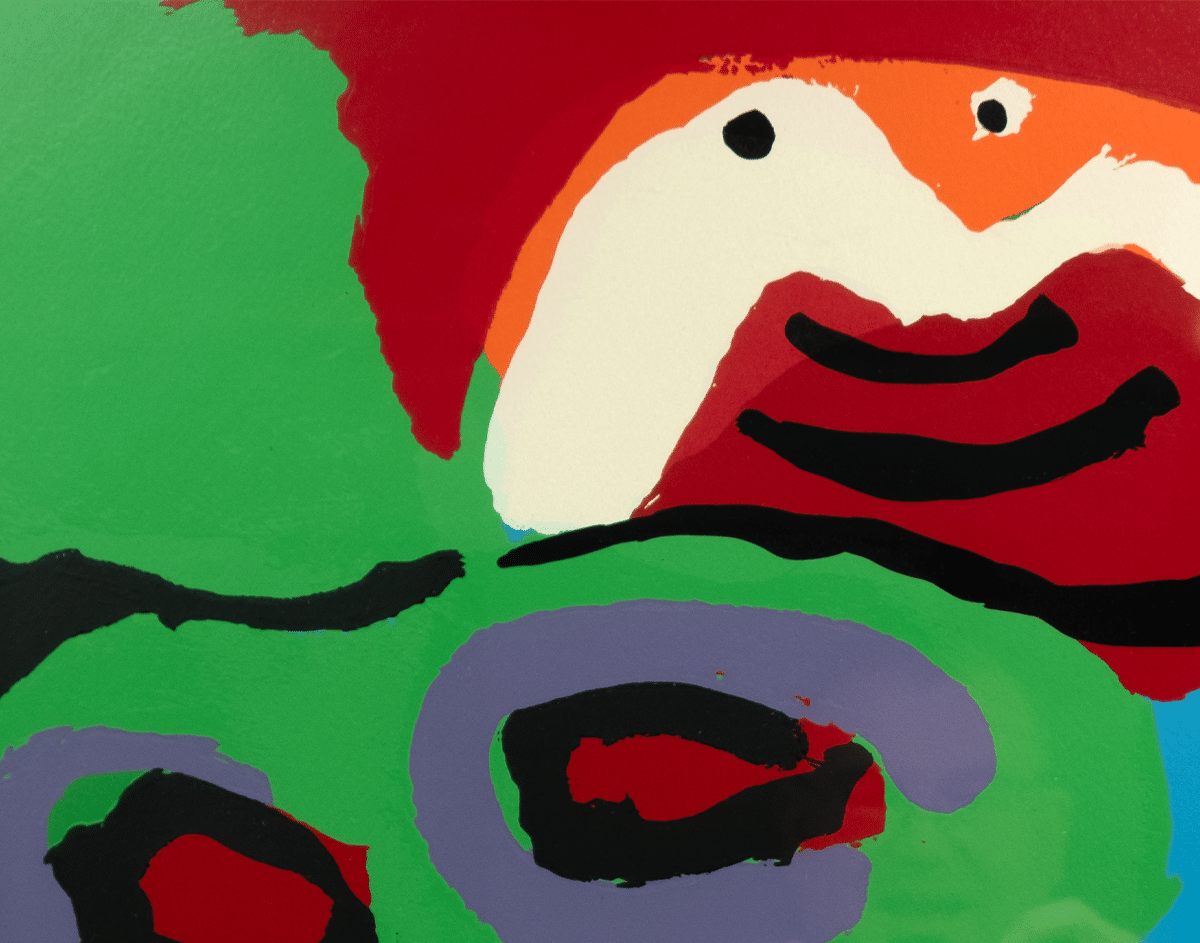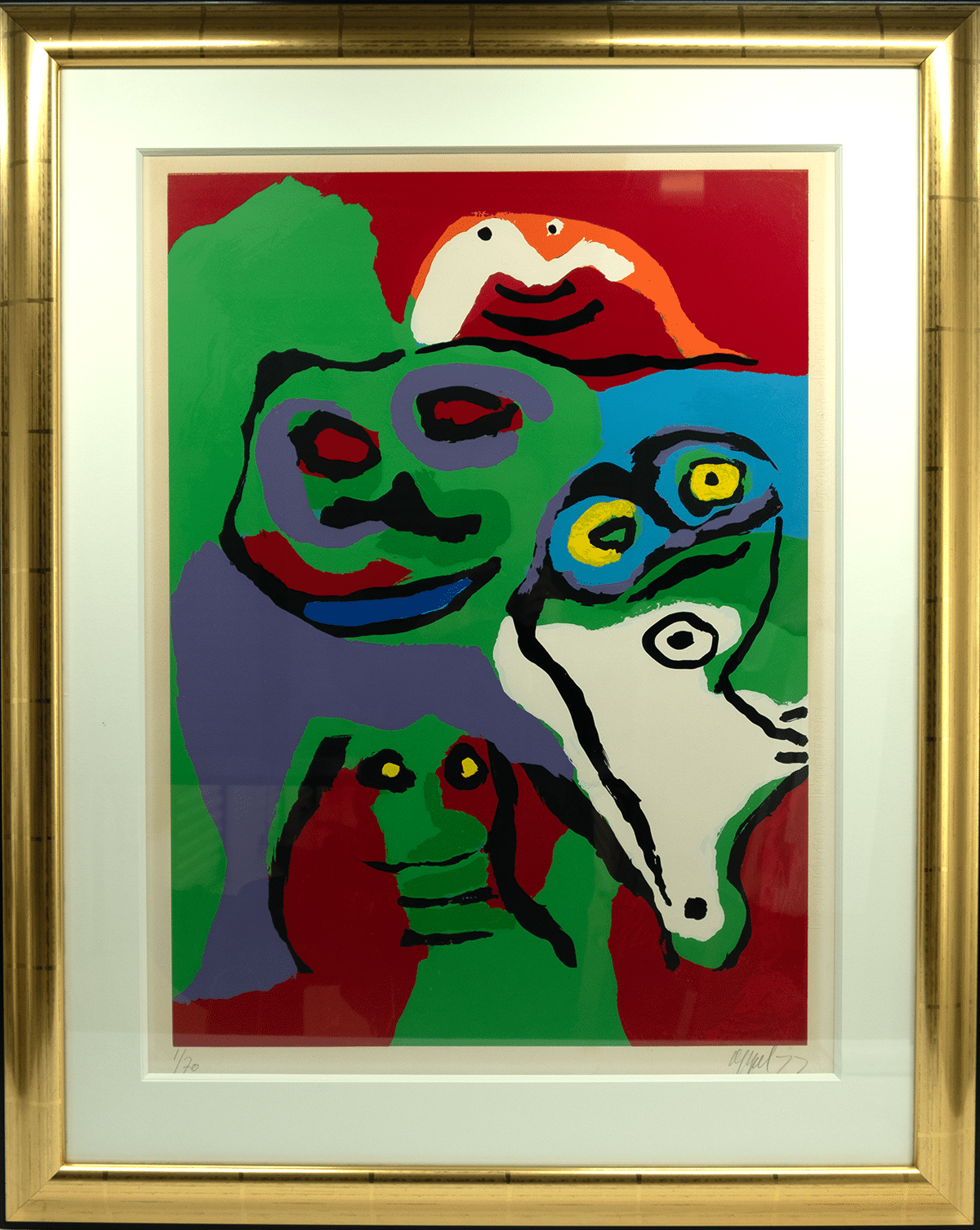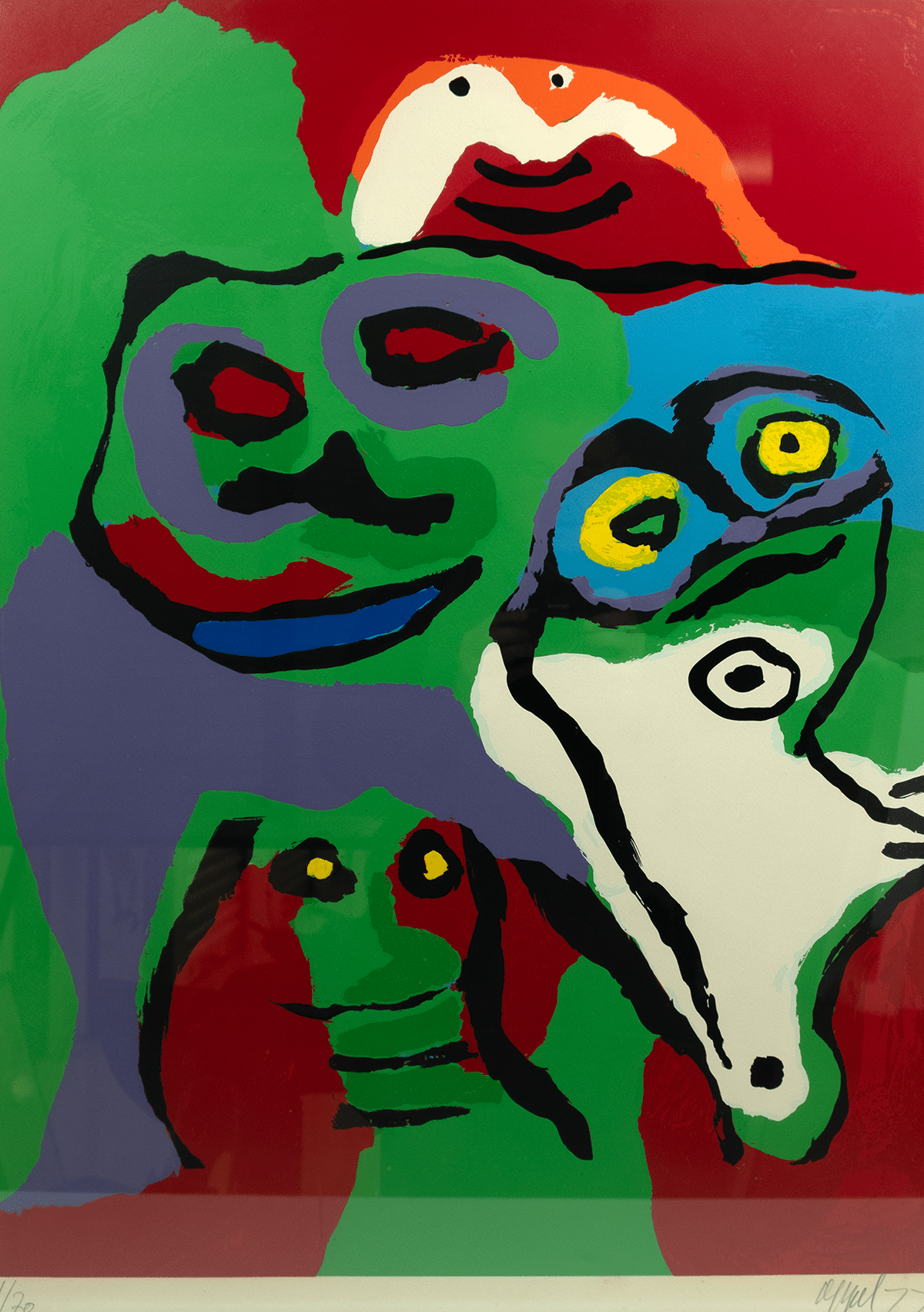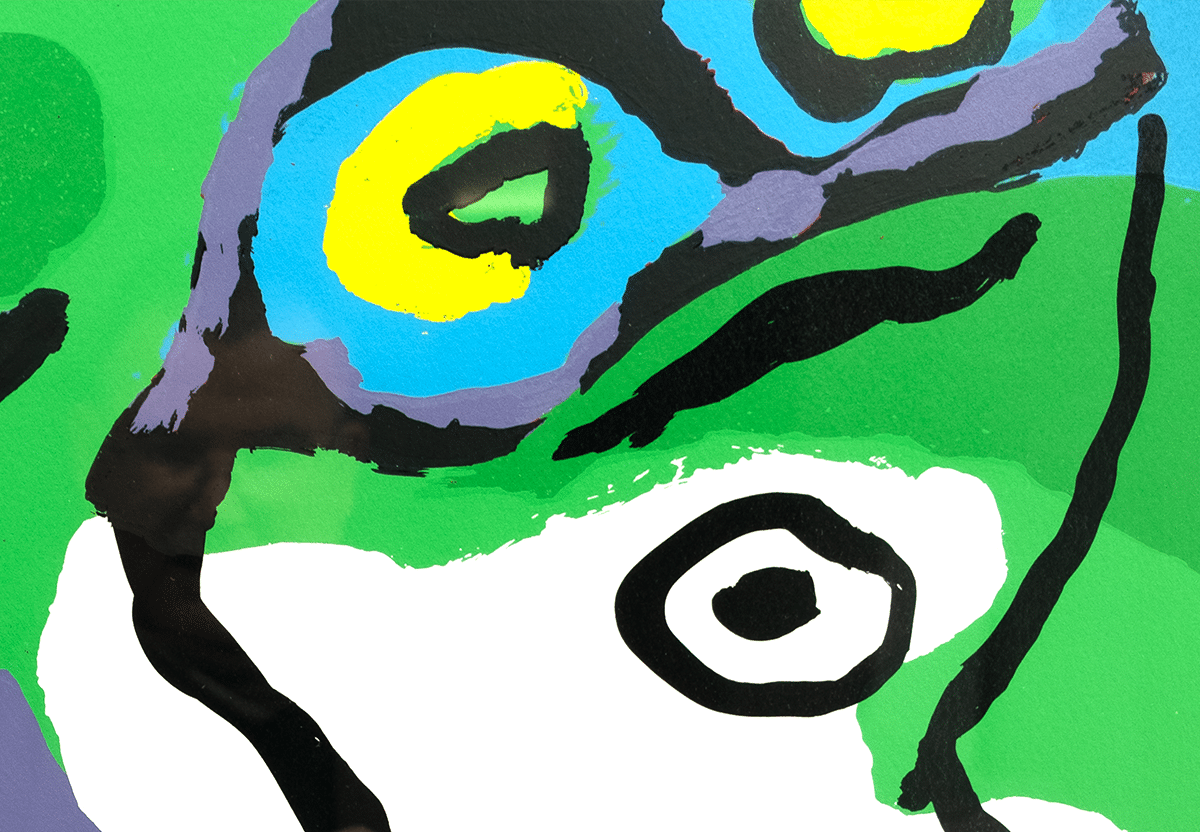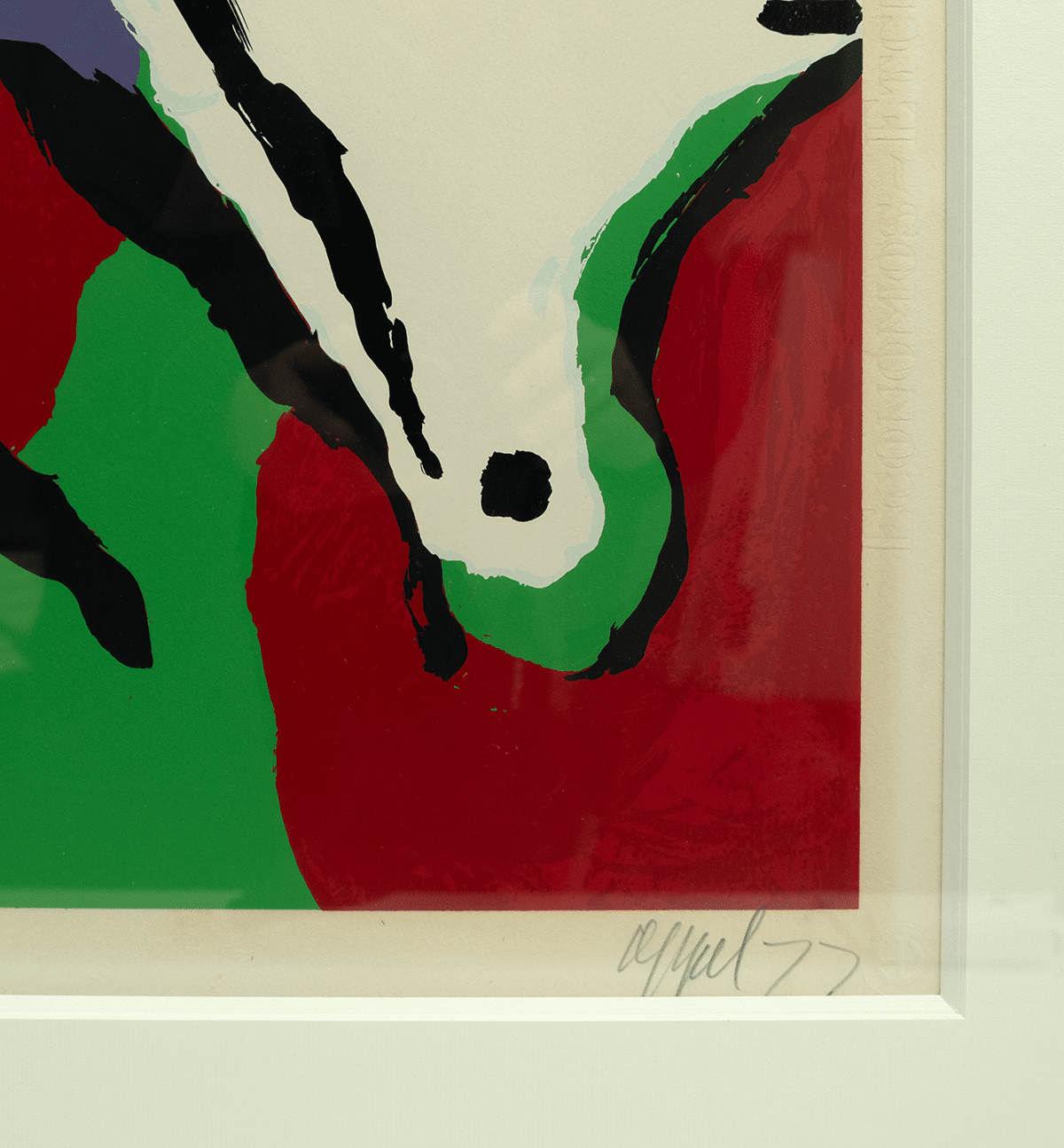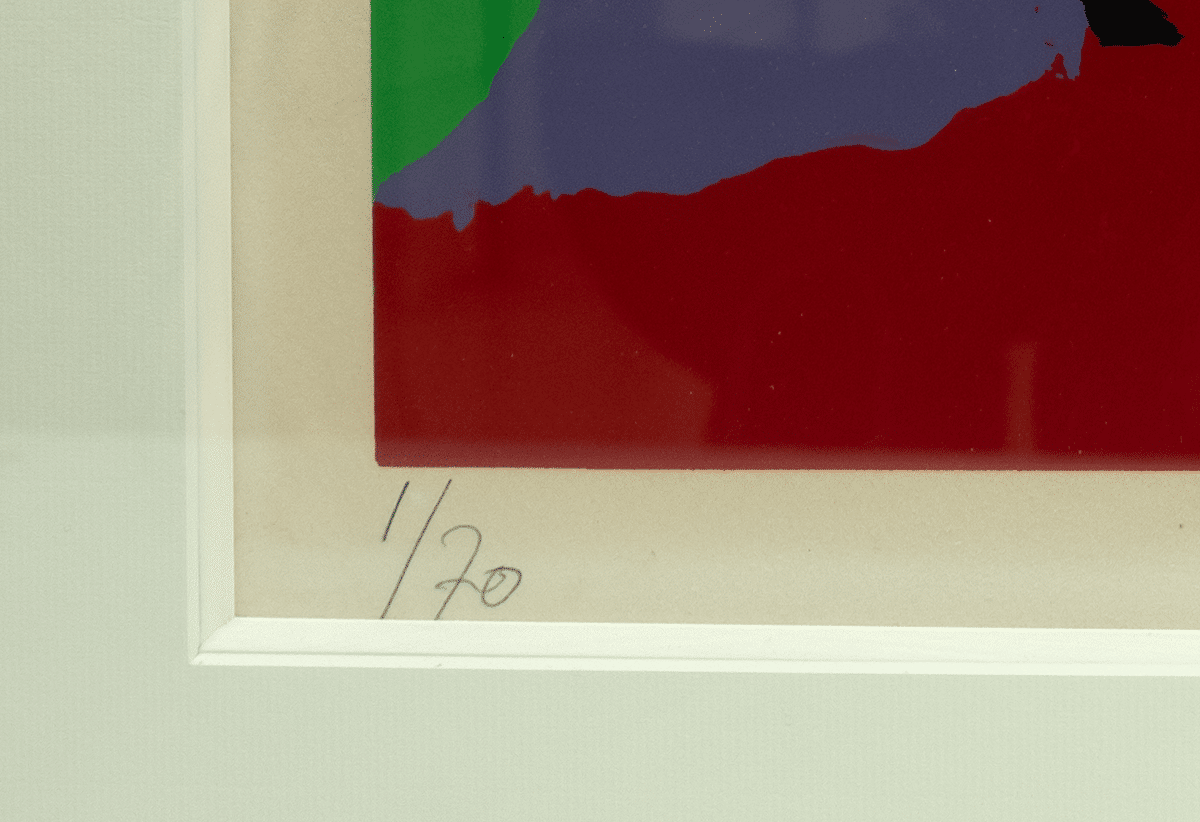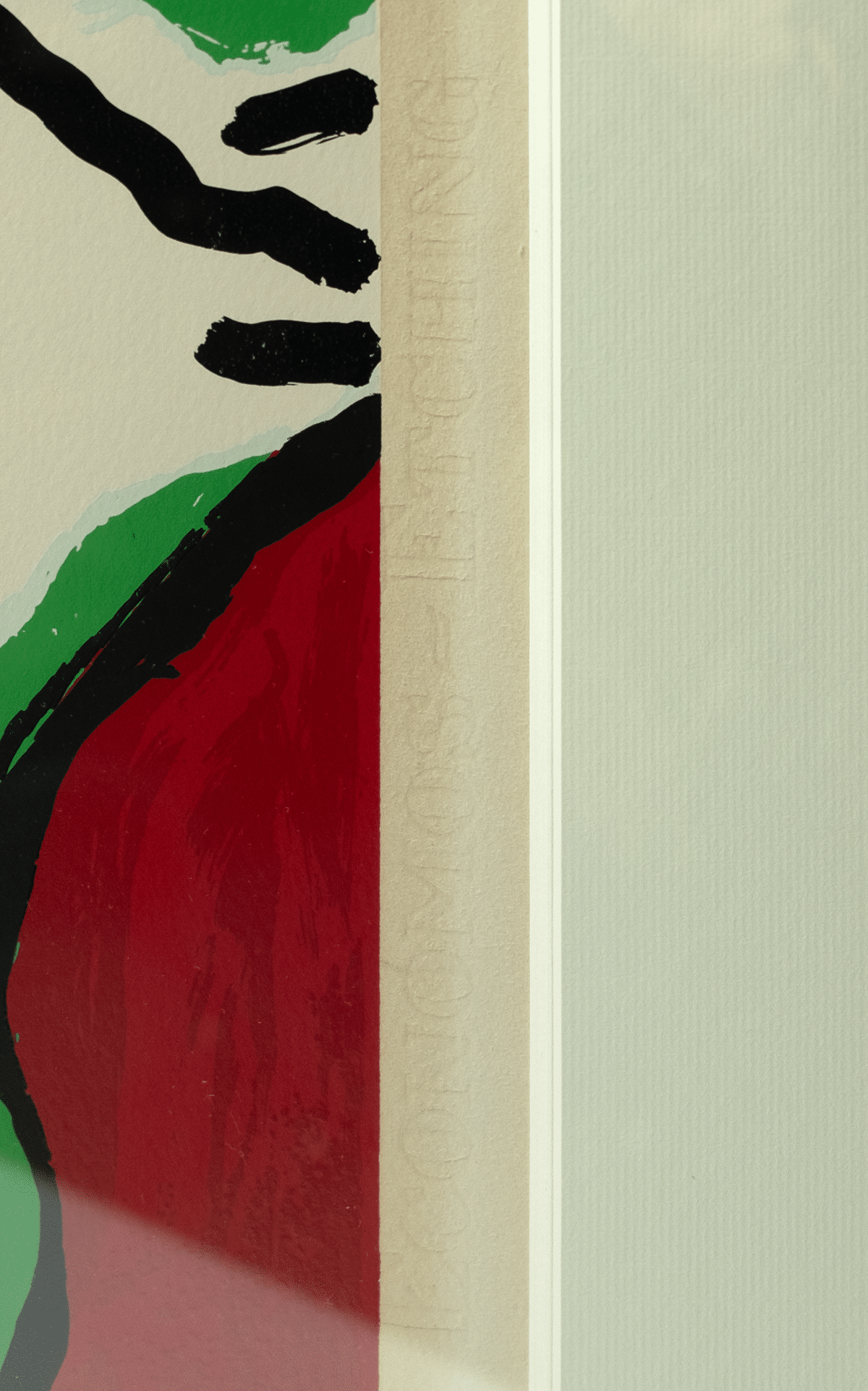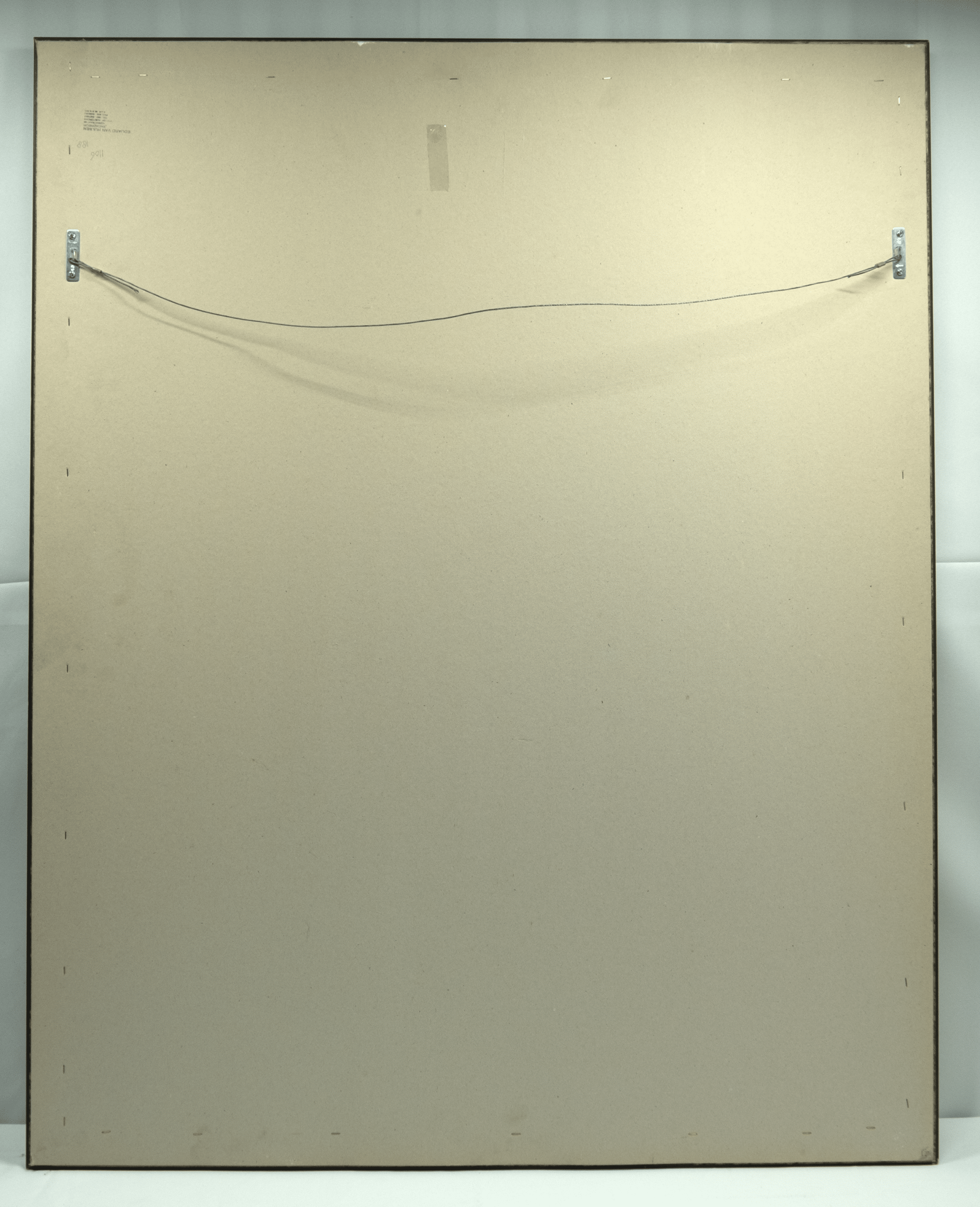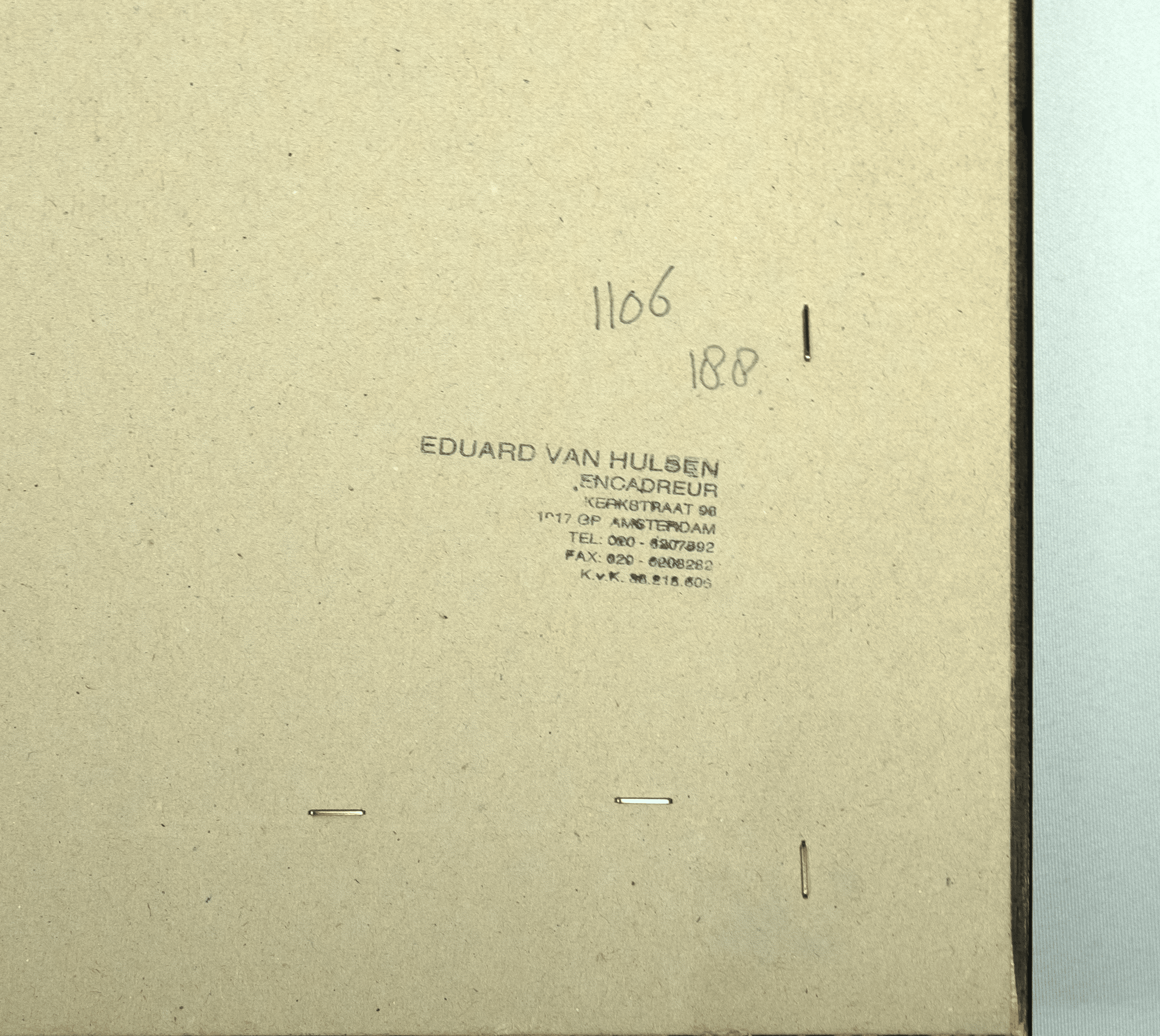Screen printing. 1970. Signed. Dimensions approx 52*52 cm. Frame 64,5*81 cm 1/70. 1977. Afmetingen afbeelding ca 57*79 cm, lijst ca 90*112 cm. Signed. l.o. in pencil (Appel).
Back to offer overview
Biography
Appel began studying at the Rijksacademie in Amsterdam in 1942. There he befriends the Belgian Corneille Beverloo. Appel’s name is inextricably linked to the Cobra group founded in Paris in November 1948. November 1951 the group breaks up again. Although the members of Cobra reject formalism and stylization, we do see a common language emerging, which continues to develop after 1951. Cobra’s work has been described as (the second wave of) primitive expressionism (Willemijn Stokvis). Appel himself writes that he was influenced by Picasso and that he sees multiple styles of art embodied in his work. Appel deliberately provokes with his art and also clearly sees himself as an avant-garde artist. He creates the illusion of naivete and childishness in his paintings (but works very hard to paint naively and “childishly”). He agrees with the part of the manifesto of Christiaan Dotremont, one of the founders of Cobra that rejects “sterile and dogmatic theory.” Appel increasingly focuses on art from the subconscious. In the 1960s he could not connect with the then newly emerging art movements; first Pop-Art, then conceptual art. In the mid-1970s, Appel began to work according to his own style again.

